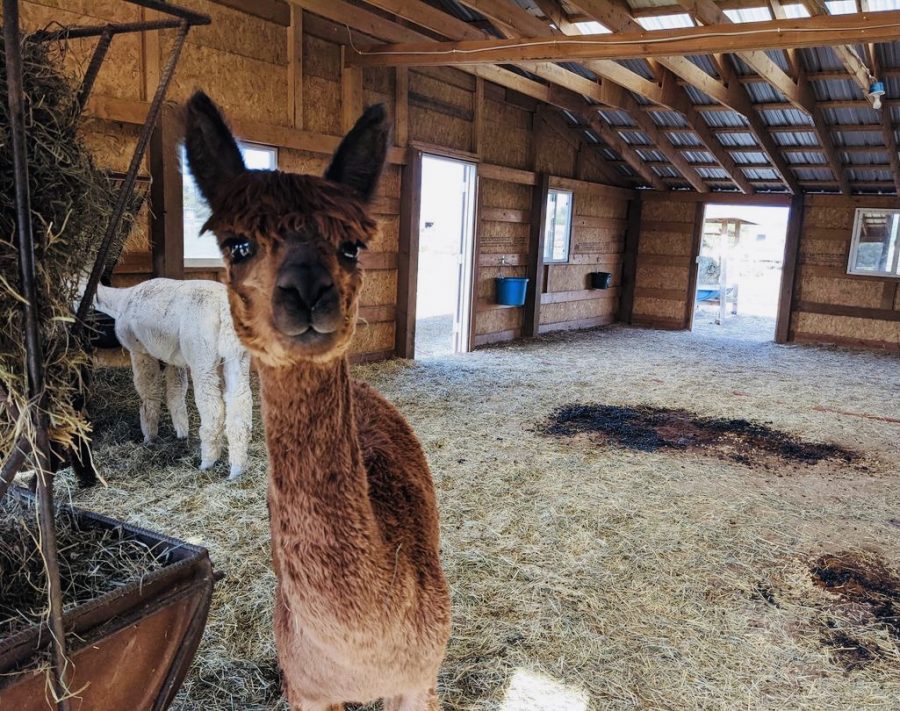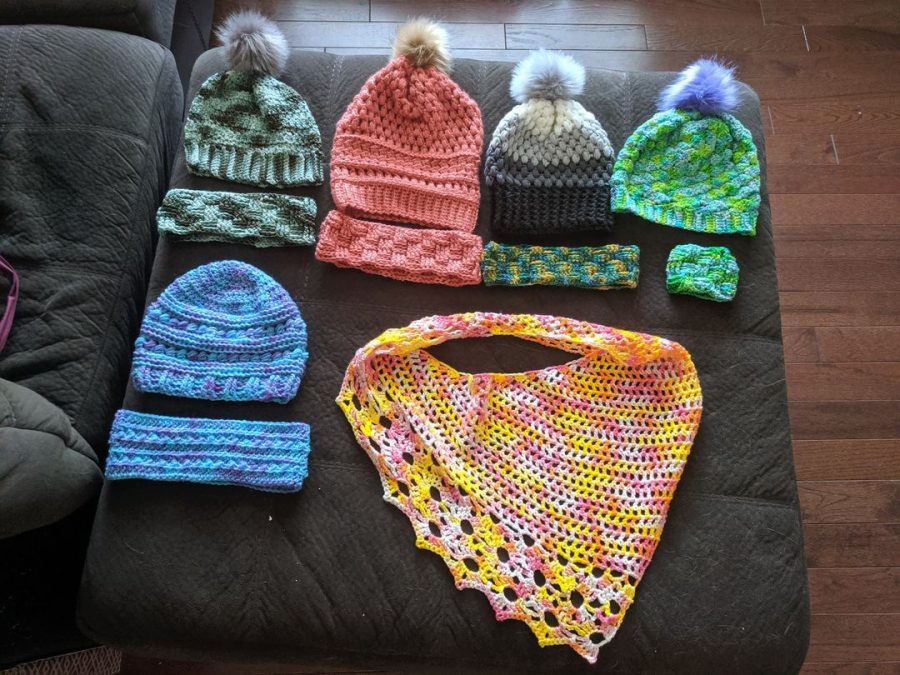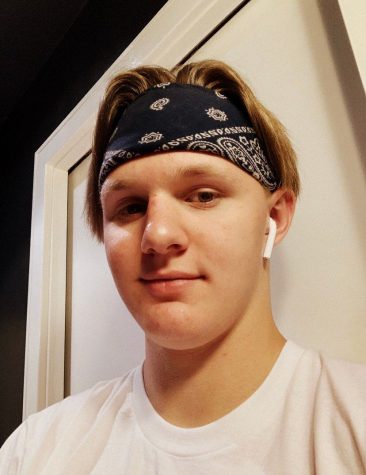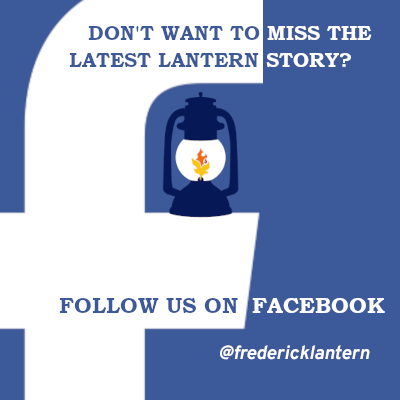STAFF MEETING: From Algebra to Alpacas
Math teacher Emily Stuhr discusses how farming cuddly pets can really add up
Mrs. Stuhr shows off one of her many headbands that she’s made herself. She finds lots of confidence in making herself warming items out of her own alpaca’s wool. “Instead of going out and buying [a headband], I can just make one. I wouldn’t say [crocheting] is super useful, but I like to make hats and I can make scarves and blankets and sweaters if I wanted to.”
December 28, 2020
It seems we’re always presented with either a lot of options or very few options when it comes time to unwind and relax from a long school day. For Mrs. Emily Stuhr however, it’s the same unique routine of going out to check on her alpacas, making sure they’re not too hot or cold, giving them some food, and providing them with all kinds of care and love. But why does she have alpacas of all animals? That’s because when she’s done interacting with them, she goes inside to sit and knit with their amazing wool that she doesn’t just buy from a craft store, but she makes herself.
“Kevin and I, we were going to a tiny house festival or something at the Stock Show. Some alpacas were at the building next door, so we were like, ‘Oh, we’re here so let’s just stop in and see.’ They were just so cute and their personalities were really interesting,” she said when she explained the first time she wanted an alpaca.
“I went to more and more shows and I just really fell in love with personalities. They’re kind of like cats–they’re curious and aloof but they’re calm too.”
After researching how to take care of them and also getting a five-acre farm with enough space for them to roam and have a barn for sleeping, Mrs. Stuhr has accumulated quite a few alpacas. She didn’t buy them all at once though–she’s slowly grown her collection with a lot of time and money. While all of them have come from different homes though, she loves every single one of them to death.
“I have ten [alpacas] total. Or, I guess I have nine and one is my mom’s. The boys’ names are Champ and Flint. Bella was the original, she was with Bri and Anna who I have now. Stella and Marisca came with the house we bought as a part of a moving arrangement. There’s Glitterati–her nickname is “Glitter.” Then there’s Little Italy, and her nickname is “Italy” and she’s the mother of Glitter. Italy is actually my mom’s. Then finally there’s Malibu Barbie–she came from the same farm as Glitter and Italy.”
With ten alpacas total, this means that she gets all sorts of different colors and different fibers every time they go in for a shearing. As for the process of making alpaca wool into yarn, it’s certainly not an easy task. According to Mrs. Stuhr, it takes lots of time and so many complicated hours of sorting, cleaning, and combing fibers that all have to be the same length.
“The process of making the sheared wool into yarn is the toughest part. Imagine picking every single piece of hay out of all the fibers. Then you have to look at the different lengths of the fibers and that takes a ton of time. After you do that, you wash it by putting it in a bathtub, soaking it, draining it, and then drying it. Then after that, you have to comb it a ton of times so that fibers can line up and then you can spin it into yarn. It takes roughly four hours on itself to pick out the hay out of what’s called the ‘blanket.’”
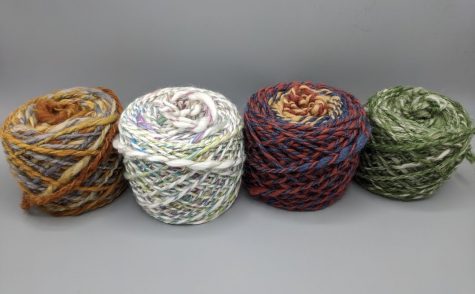
After all is said and done, Mrs. Stuhr has tons of yarn to use however she likes. Her most common creations are hats, scarfs, and even sweaters. As she detailed, these creations don’t just happen overnight: they’re just as much a lengthy process as making the yarn itself. However, her crocheting skills didn’t come from her own self teachings, nor did it come to her recently as she explained.
“My mom [taught me to crochet]. She taught me when I was in elementary school. I didn’t really crochet much until college and then I kind of picked it up again. I had a couple of friends that were math majors that also crocheted. On our weekends, we would do math and crochet because we were really cool.”
For Mrs. Stuhr, crocheting has been and still is her peaceful way to spend her time after a long day of online or hybrid teaching. As we inquired more and more about her creations and her alpaca’s names however, we began to wonder as to why alpaca wool of all things is so special, to which Mrs. Stuhr easily cleared it up.
“With actual wool they have this oil called “lanolin” and for the people that are allergic to wool, it’s actually usually the lanolin. Alpacas don’t have lanolin, so if you’re allergic to wool, alpaca [wool] is generally hypo-allergenic. You add in the fact that it’s super warm, it’s water resistant, and fire resistant. It’s just pretty amazing all together.”
Even though the ability to make her own warm items is convenient, she doesn’t just make all of her creations for herself. She likes to mainly give her student-aid’s hats as “thank you” gifts for helping her grade as well as teachers and their children certain gifts for special occasions.
“I’ve made a little crocheted octopus for either Mrs. Paswaters or Mrs. Lever. My sister-in-law is pregnant right now, and I’m making a little teddy bear. I’m also making brother’s girlfriend some crocheted succulents for Christmas. Those are kind of hard because you have to sew them together and I don’t know sewing.”
While she has tried to set up an Etsy shop for herself, she explained to the Scout that she hasn’t really had time to post pictures of her creations to sell. However, she is happy with what she does with her creations as they feel like a little personal gift from her. Overall though, her alpacas and crocheting are her ground and are what’s keeping her sane during COVID.
“If it weren’t for the alpacas, I think I’d be going crazy. With COVID, it’s been hard on everybody. At least when I go home, I have something that I have [to get me] to stop working and I have to feed the alpacas and take care of them. It stops me from working all the time and so it’s been really good with that work and life balance and just going home and seeing their cute little fuzzy faces is great.”


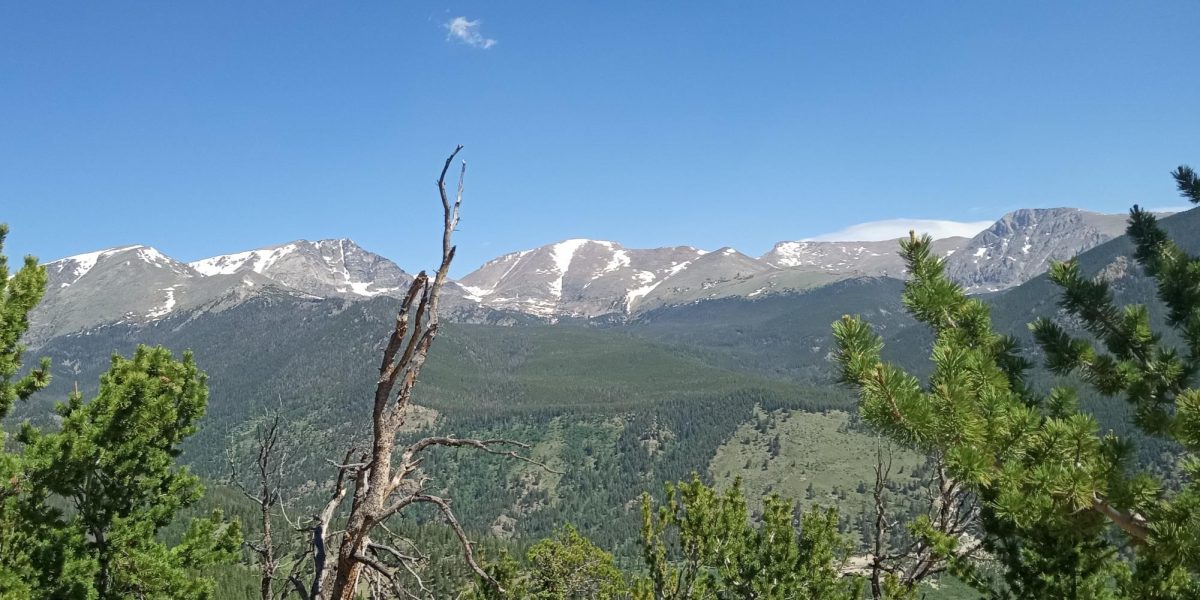

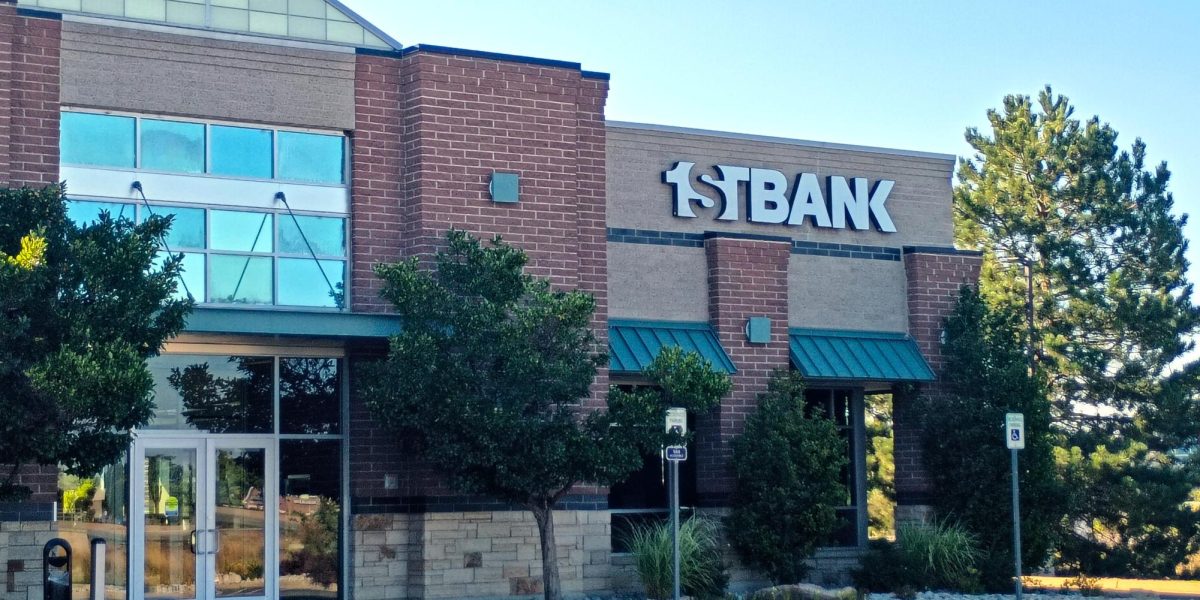



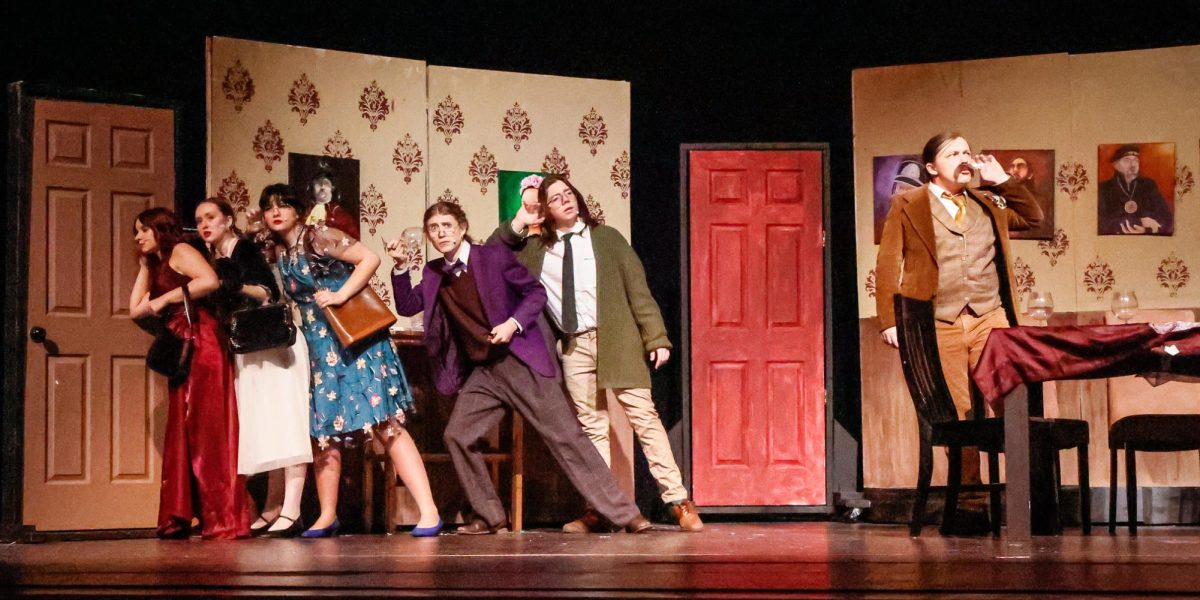

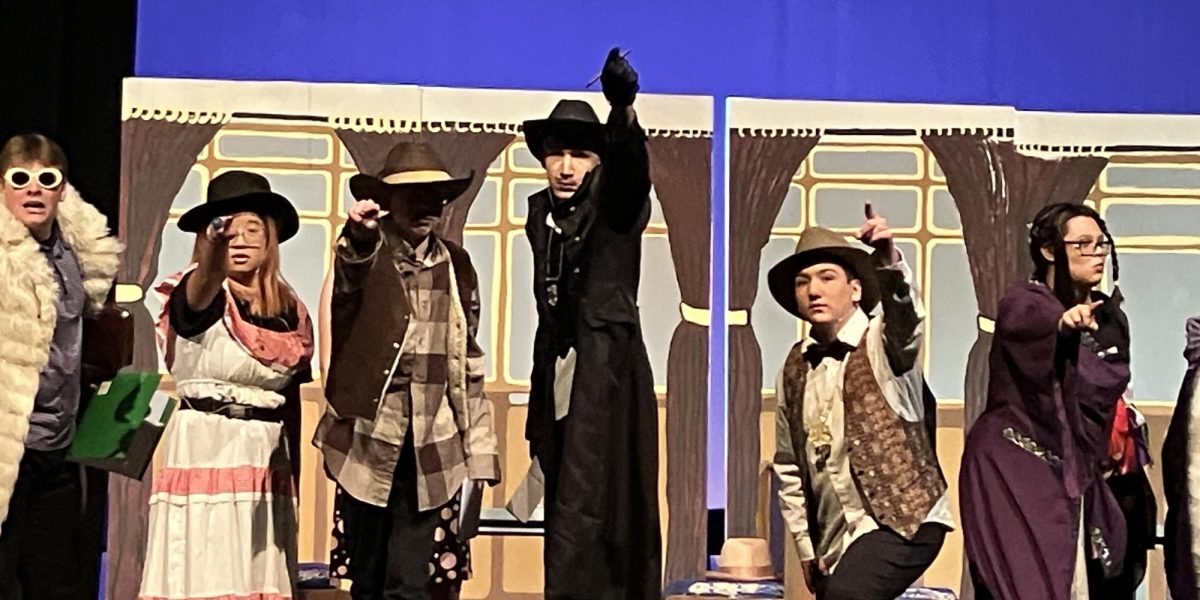


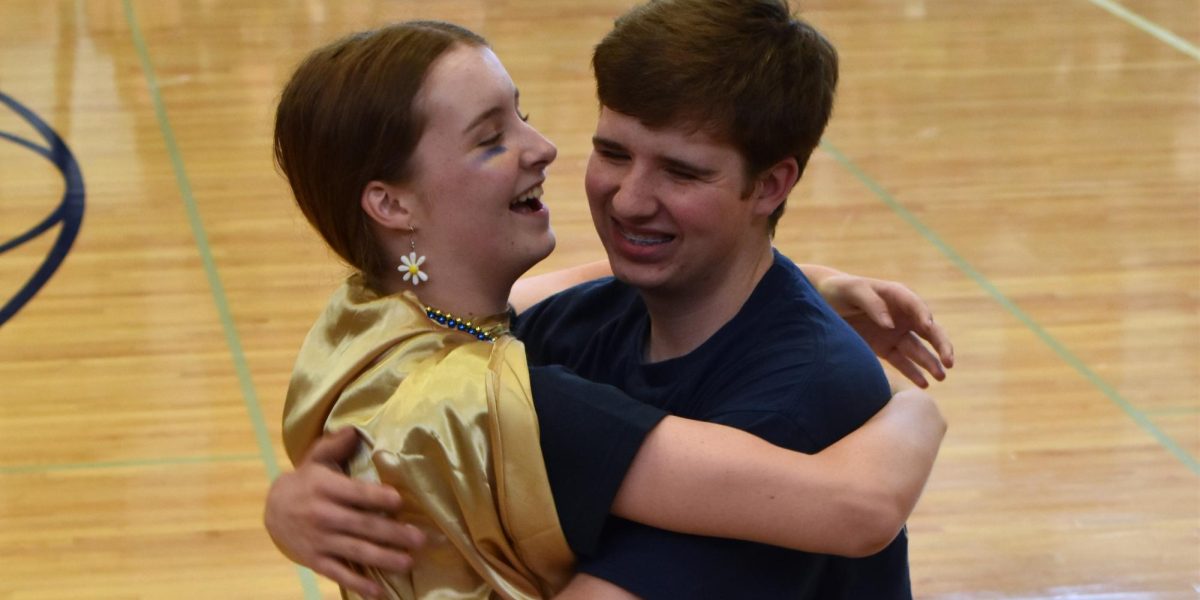
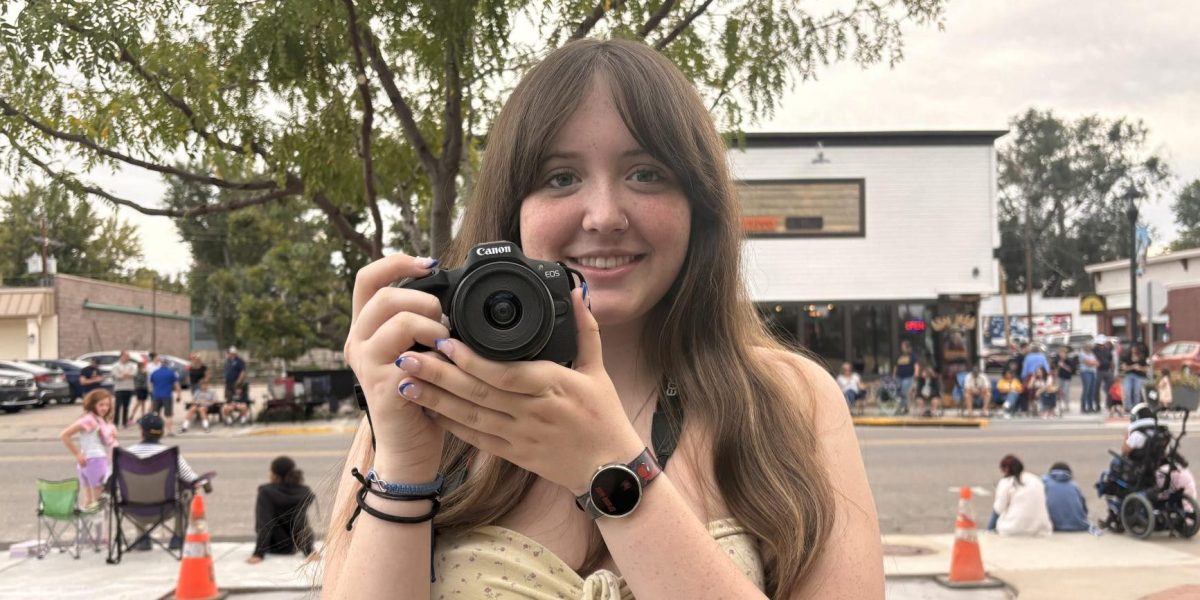
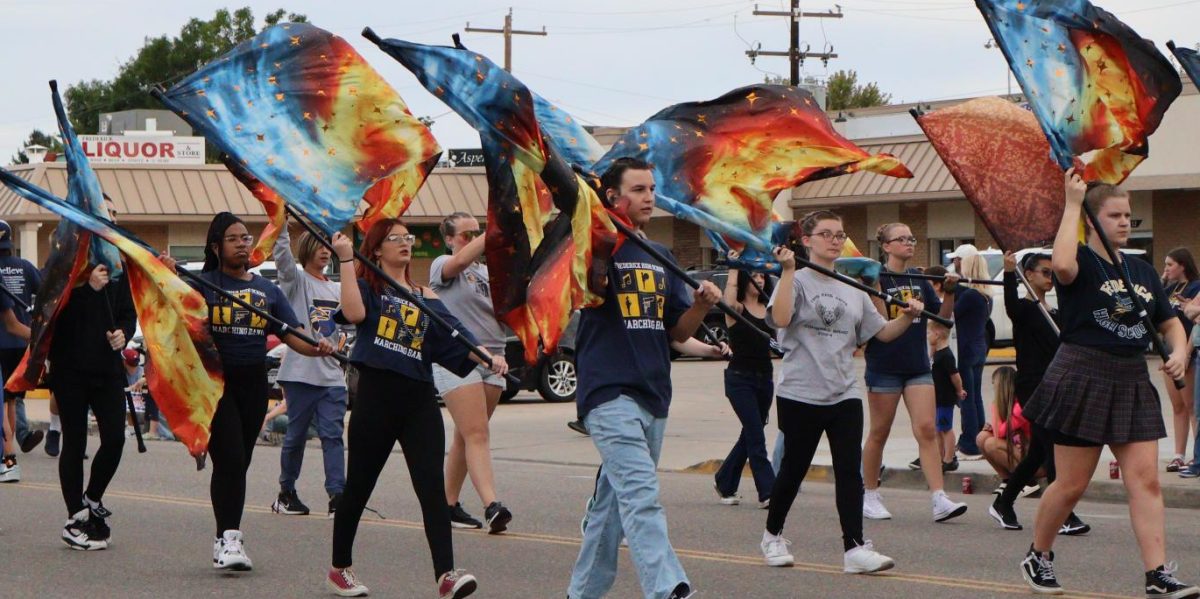
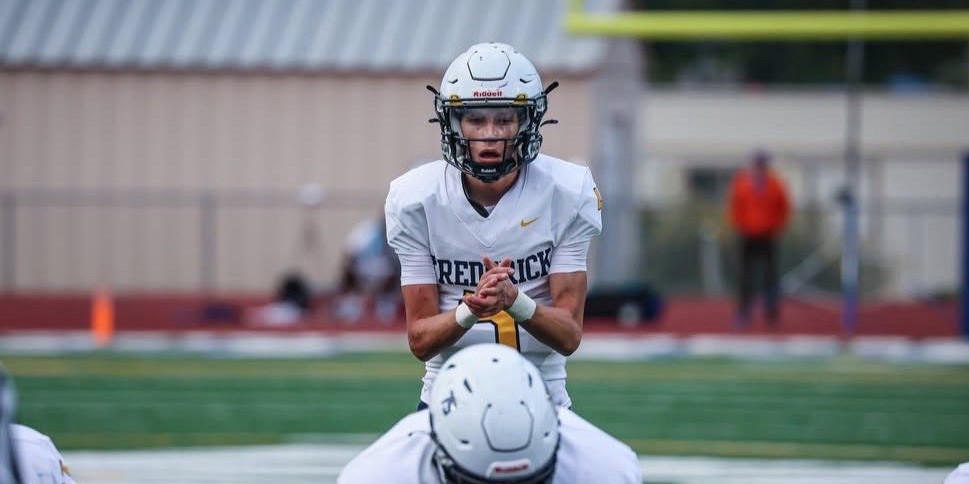
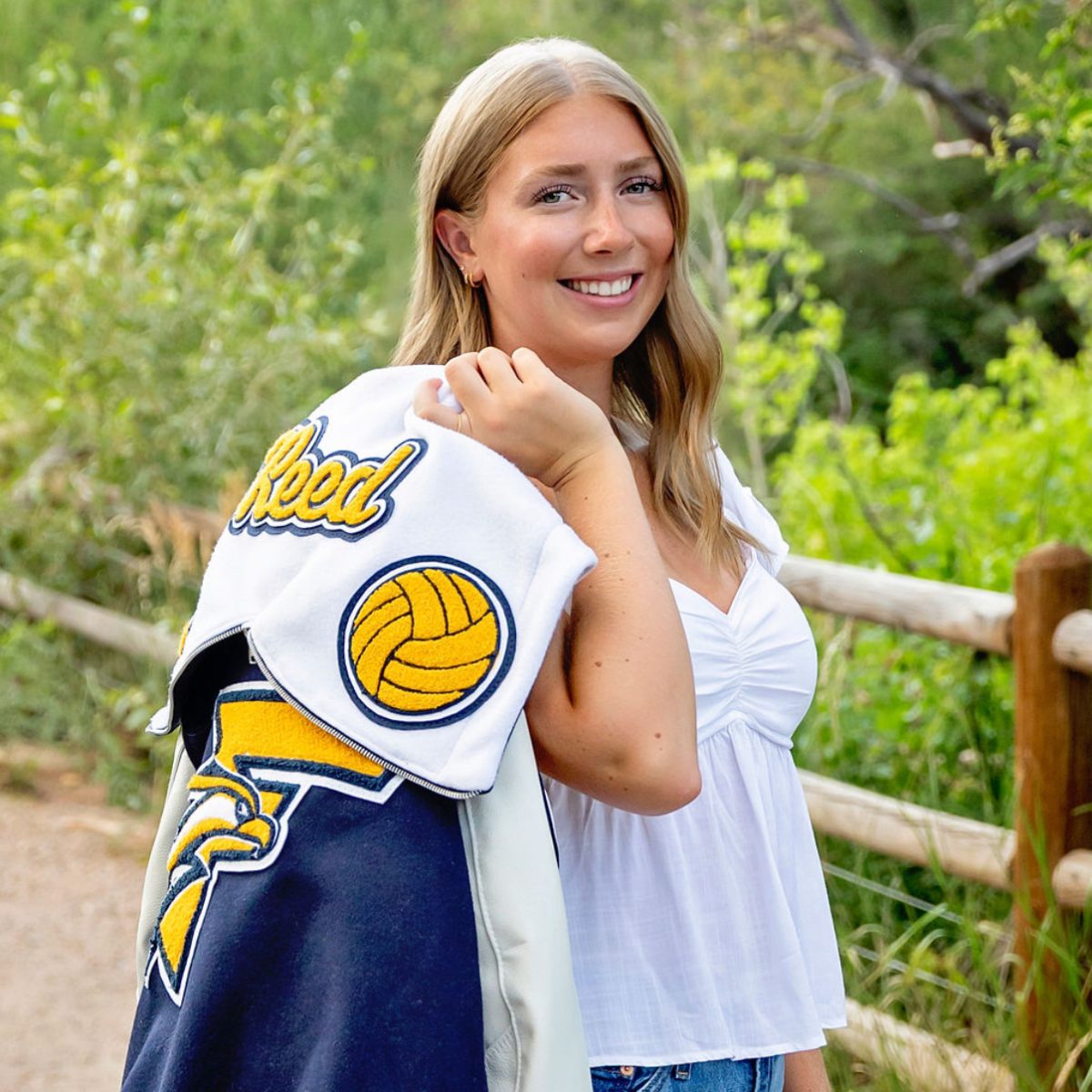
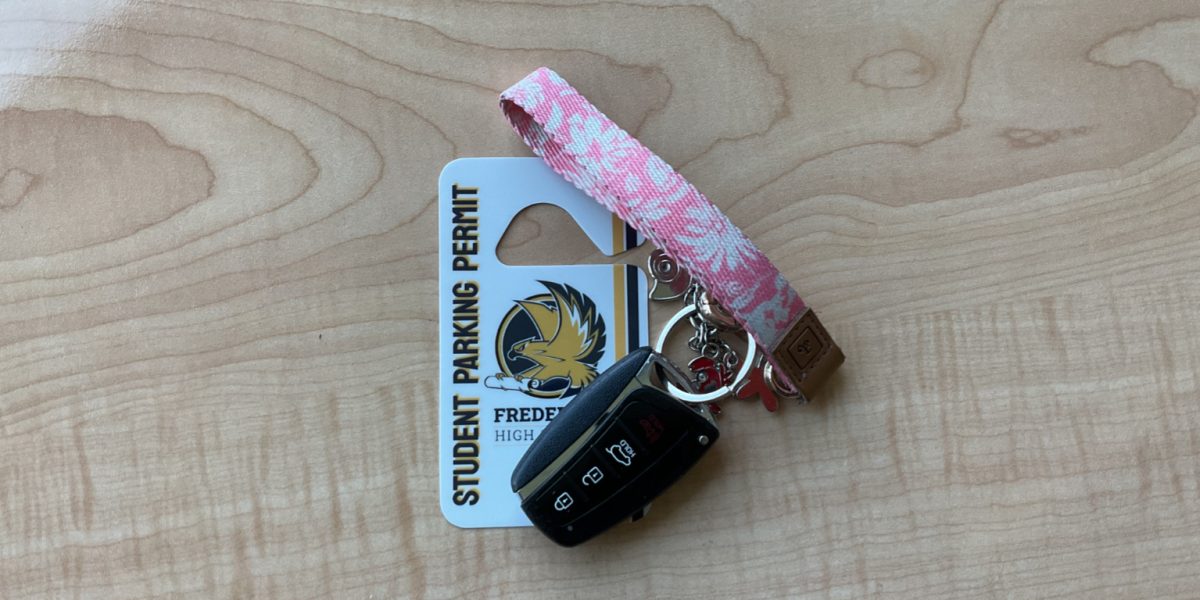


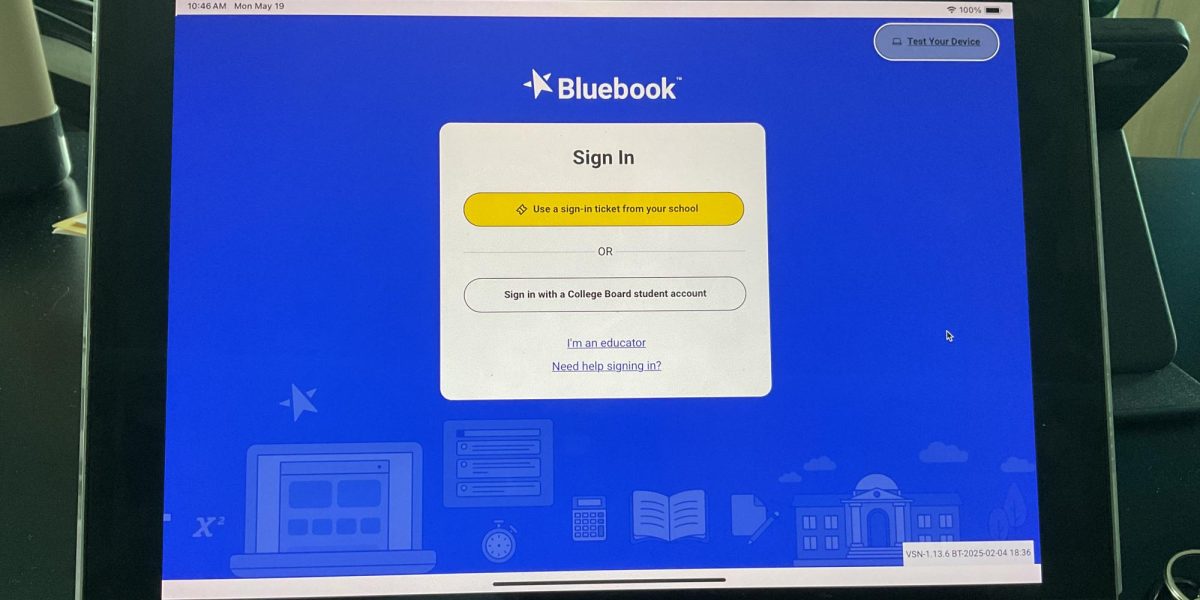



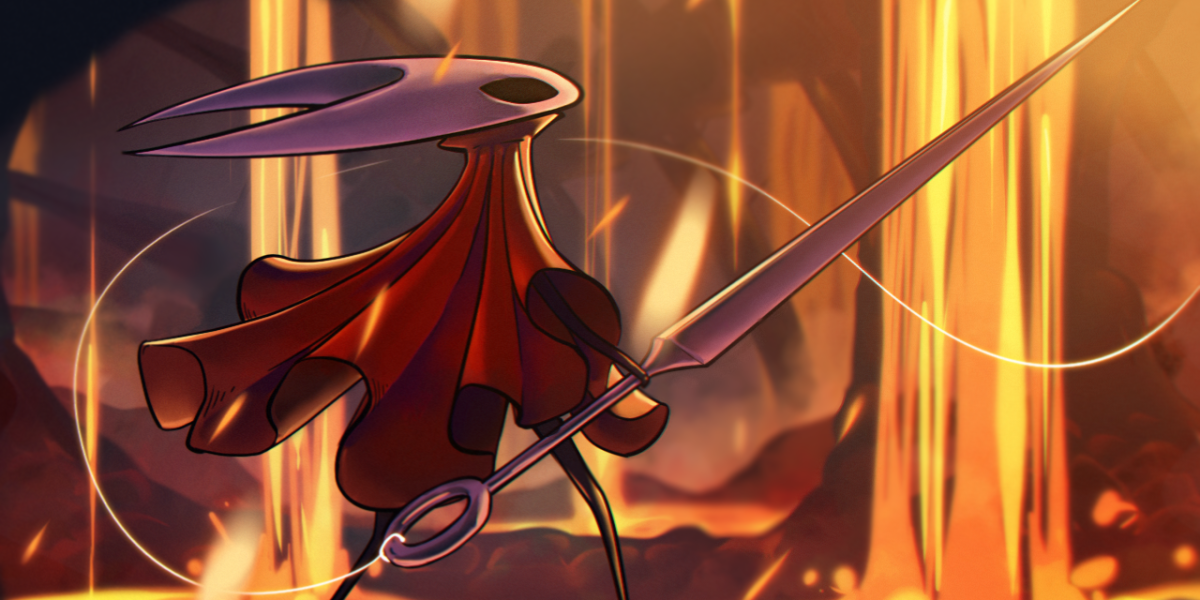
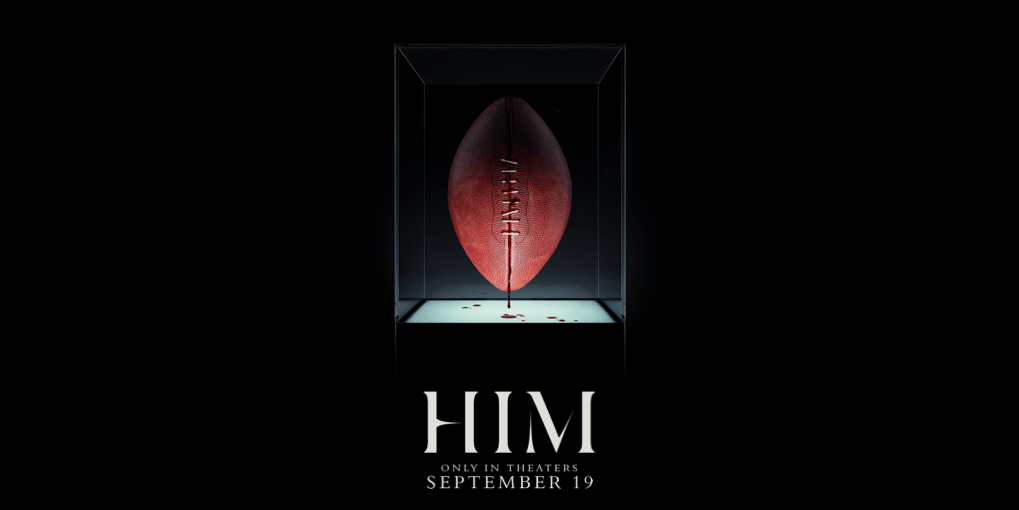




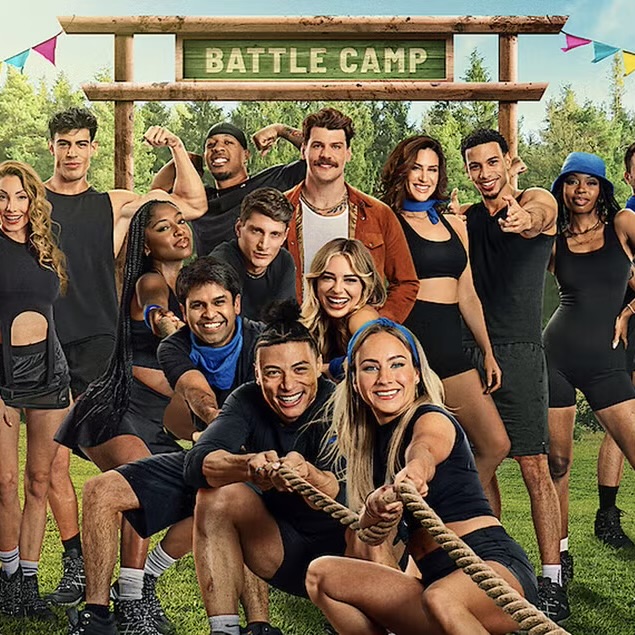

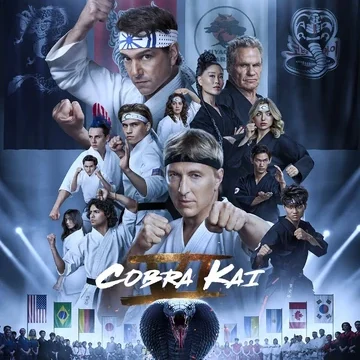
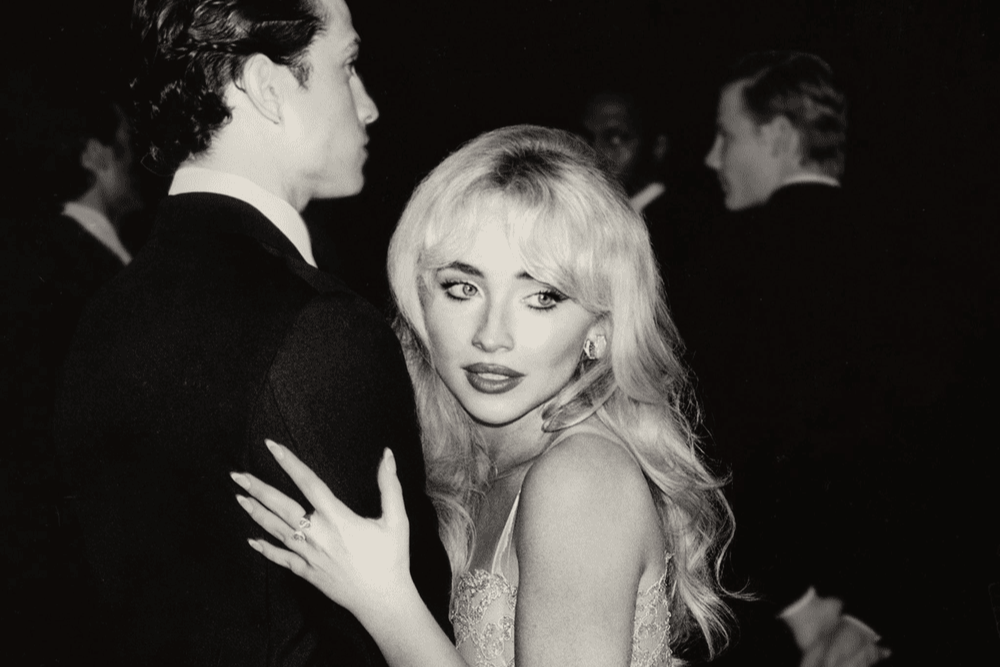



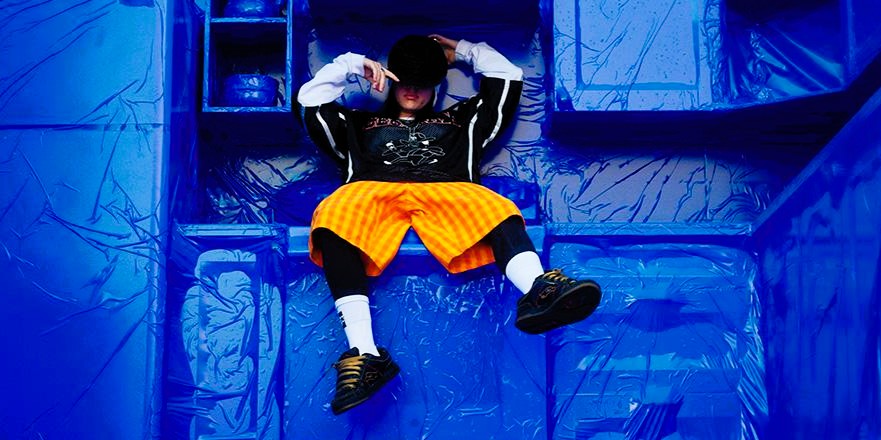
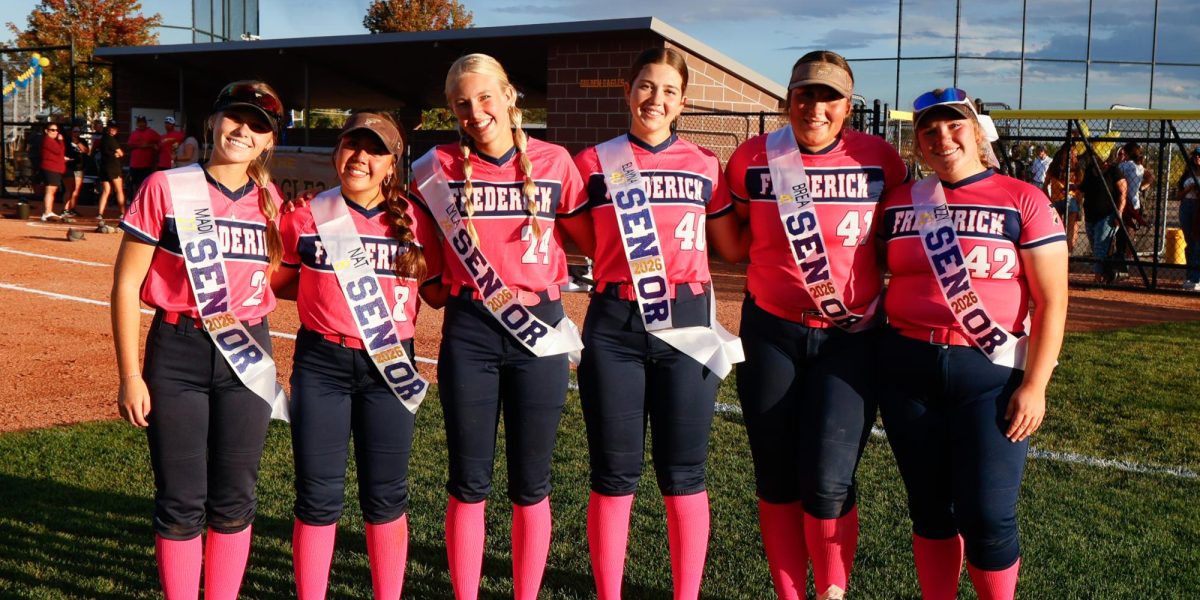
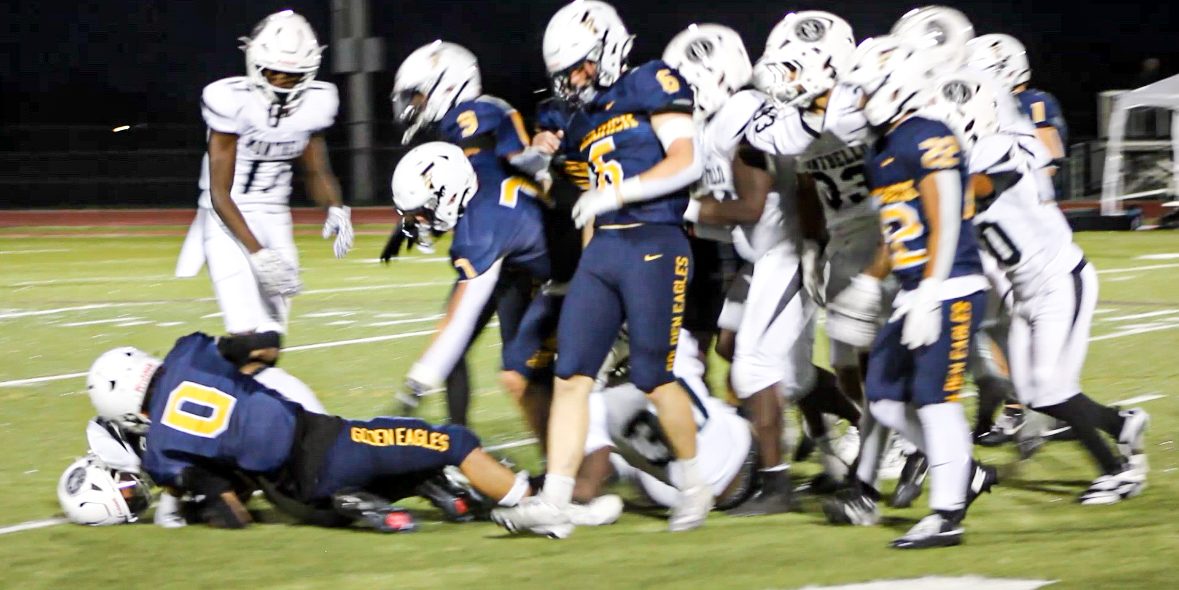
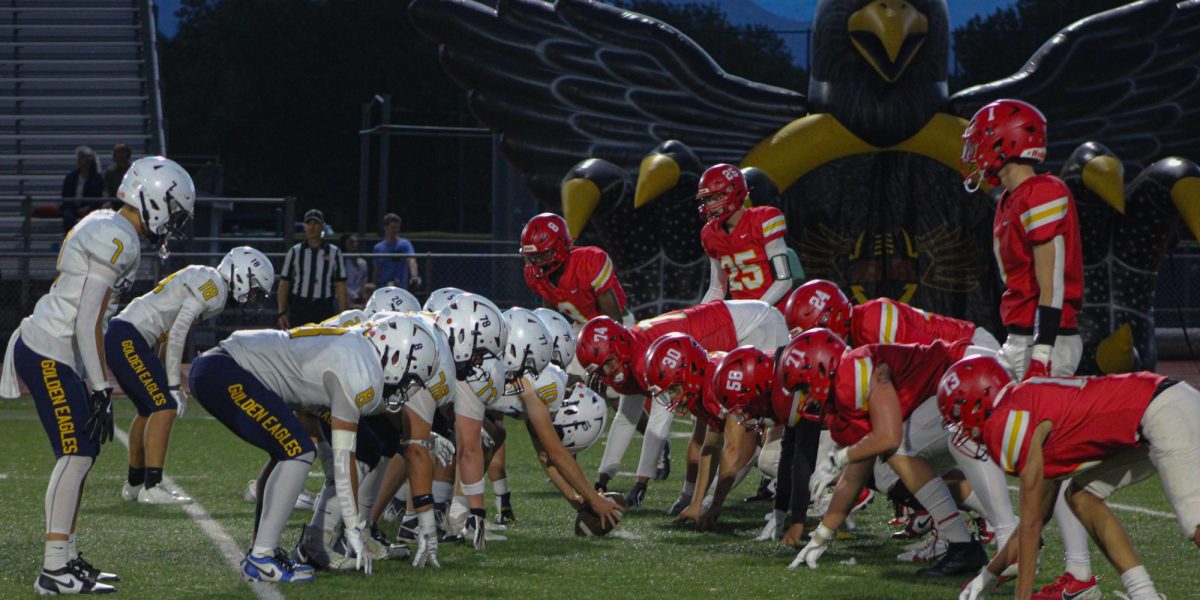
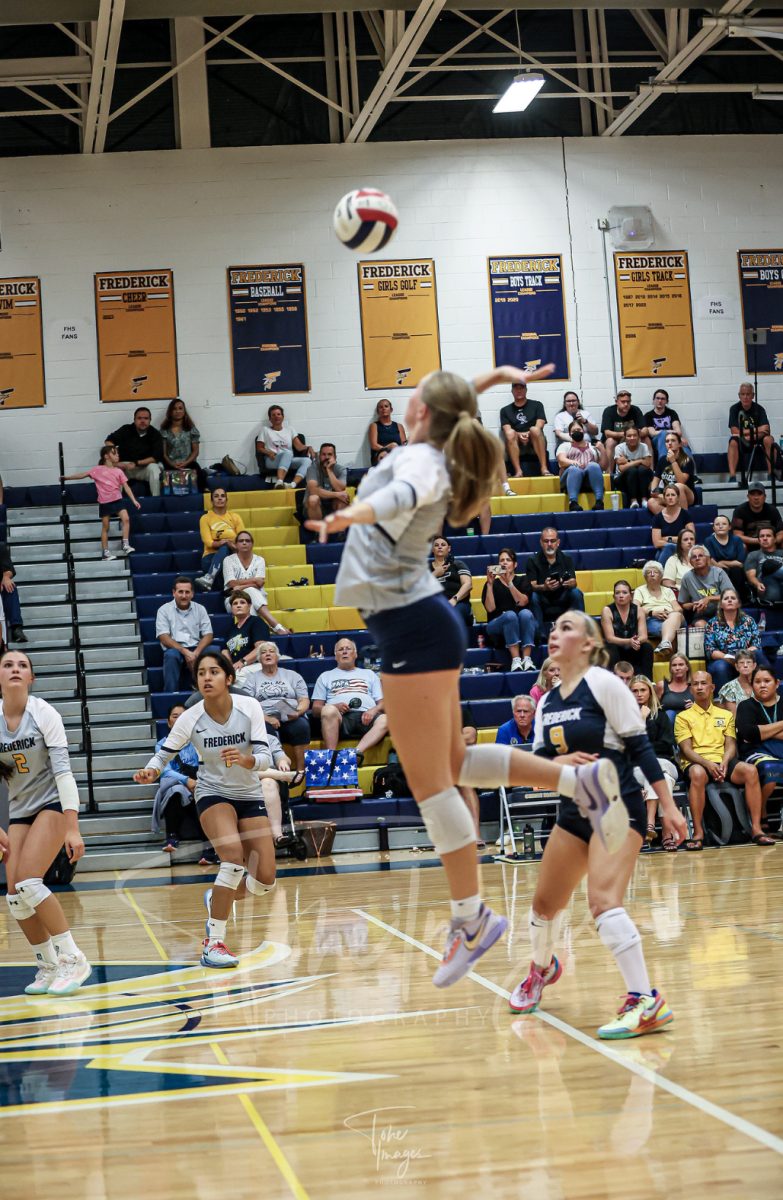
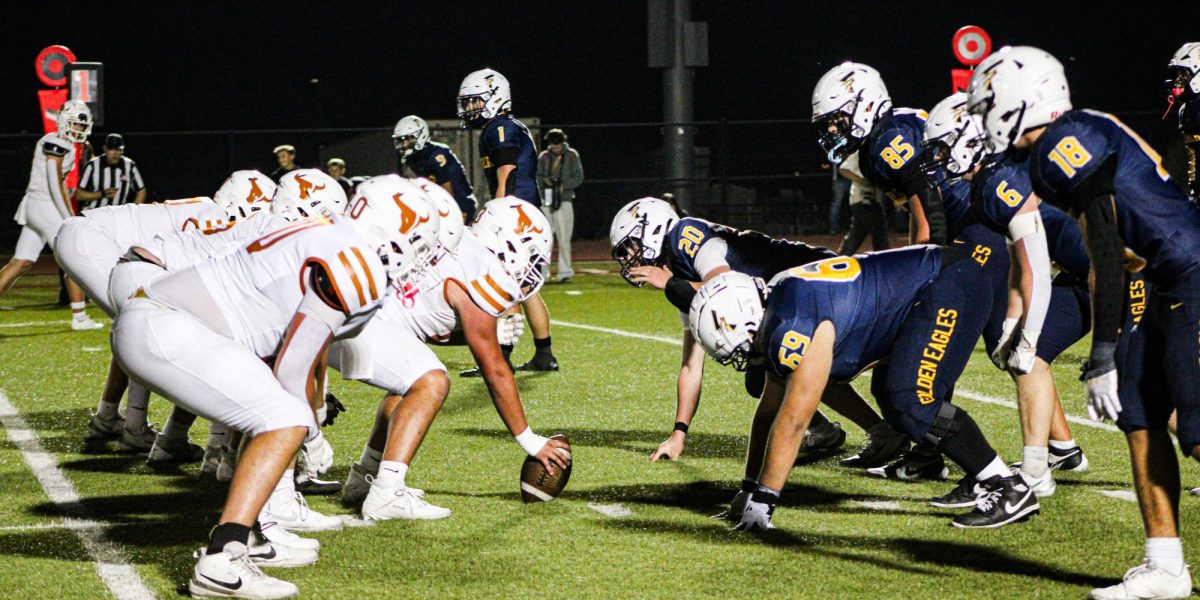

![Mrs. Stuhr shows off one of her many headbands that she’s made herself. She finds lots of confidence in making herself warming items out of her own alpaca’s wool. “Instead of going out and buying [a headband], I can just make one. I wouldn’t say [crocheting] is super useful, but I like to make hats and I can make scarves and blankets and sweaters if I wanted to.”](https://fredericklantern.com/wp-content/uploads/2020/12/F043D58A-E418-4A77-AAB2-BA10C139C579-850x900.jpeg)
